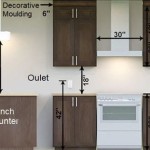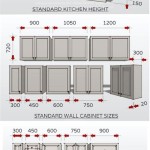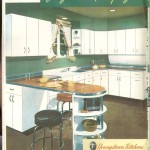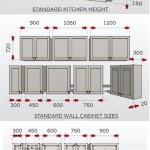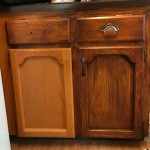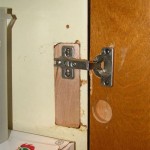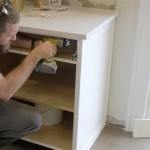Prevent Steam Damage to Kitchen Cabinets
Kitchen cabinets are a significant investment, contributing to both the functionality and aesthetic appeal of a kitchen. They are, however, susceptible to damage, particularly from the constant exposure to steam and moisture generated during cooking. Steam damage can manifest as warping, discoloration, peeling, and even mold growth, detracting from the cabinets' appearance and potentially reducing their lifespan. Understanding the causes and implementing preventative measures can help safeguard your kitchen cabinets from the damaging effects of steam.
Understanding the Causes of Steam Damage
Steam, a byproduct of cooking, carries with it moisture that can negatively impact kitchen cabinets. The heat and humidity generated during cooking can cause wood to expand and contract, leading to warping and distortions. This cyclical expansion and contraction can also weaken the cabinet's structure, making it more susceptible to cracking and splitting. Additionally, steam can carry grease and food particles that can accumulate on the cabinet surfaces, creating a breeding ground for bacteria and mold.
The severity of steam damage is influenced by several factors, including the frequency of cooking, the type of cooking methods employed, and the material and construction of the cabinets. Frequent and intense cooking, particularly using steam-generating appliances like steamers and pressure cookers, can significantly increase the risk of steam damage. The materials used in the cabinets also play a vital role. Solid wood cabinets, while aesthetically appealing, are more susceptible to steam damage compared to engineered wood or laminate cabinets. Similarly, poorly ventilated kitchens can trap steam and moisture, exacerbating the damage.
Preventing Steam Damage
Preventing steam damage requires a multi-pronged approach, incorporating both proactive and reactive measures.
1. Ventilation and Air Circulation
Adequate ventilation is crucial for removing steam and moisture from the kitchen. An efficient range hood with a powerful fan should be installed over the cooktop and used during cooking to quickly exhaust steam. Ensure the range hood has a duct that vents to the outside, effectively expelling the steam instead of recirculating it back into the kitchen. Additionally, consider opening windows during and after cooking sessions to allow fresh air circulation.
2. Strategic Cabinet Placement
Whenever possible, position cabinets away from the primary steam sources, like the stovetop and oven. Avoid placing cabinets directly above the stovetop to minimize direct exposure to hot steam. This strategic placement helps reduce the frequency and intensity of steam exposure, mitigating the potential for damage.
3. Regular Cleaning and Maintenance
Maintaining clean and dry cabinets is essential to prevent mold growth and bacterial contamination. Wipe down cabinet doors and surfaces after cooking, removing any grease, food particles, or accumulated moisture. If you notice any signs of steam damage, like warping or discoloration, address them promptly.
Protecting Your Investment
By understanding the causes of steam damage and adopting preventative measures, you can significantly reduce the risk of damage to your kitchen cabinets. Implementing effective ventilation, strategic cabinet placement, and consistent cleaning practices will help maintain the beauty and functionality of your kitchen cabinets for years to come. Remember, a well-ventilated kitchen environment and proper care are key to preventing steam damage and preserving the investment you've made in your kitchen cabinets.

The Impact Of Heat And Steam On Kitchen Cabinets Superior

The Impact Of Heat And Steam On Kitchen Cabinets Superior

The Impact Of Heat And Steam On Kitchen Cabinets Superior

Risk Of Steam Damage To Uppers

Repair Water Or Steam Damage On Wood Kitchen Cabinets

How To Repair Kitchen Cabinets With Water Damage Drywall Blue Springs Mo

How To Protect Cabinetry From Heat

How To Stop Condensation In Your Kitchen Knb

How To Get Rid Of Water Marks On Wood Cabinets Trends Finishing

How To Repair And Prevent Moisture Damage Wood Cabinets Bessemeter
Related Posts


